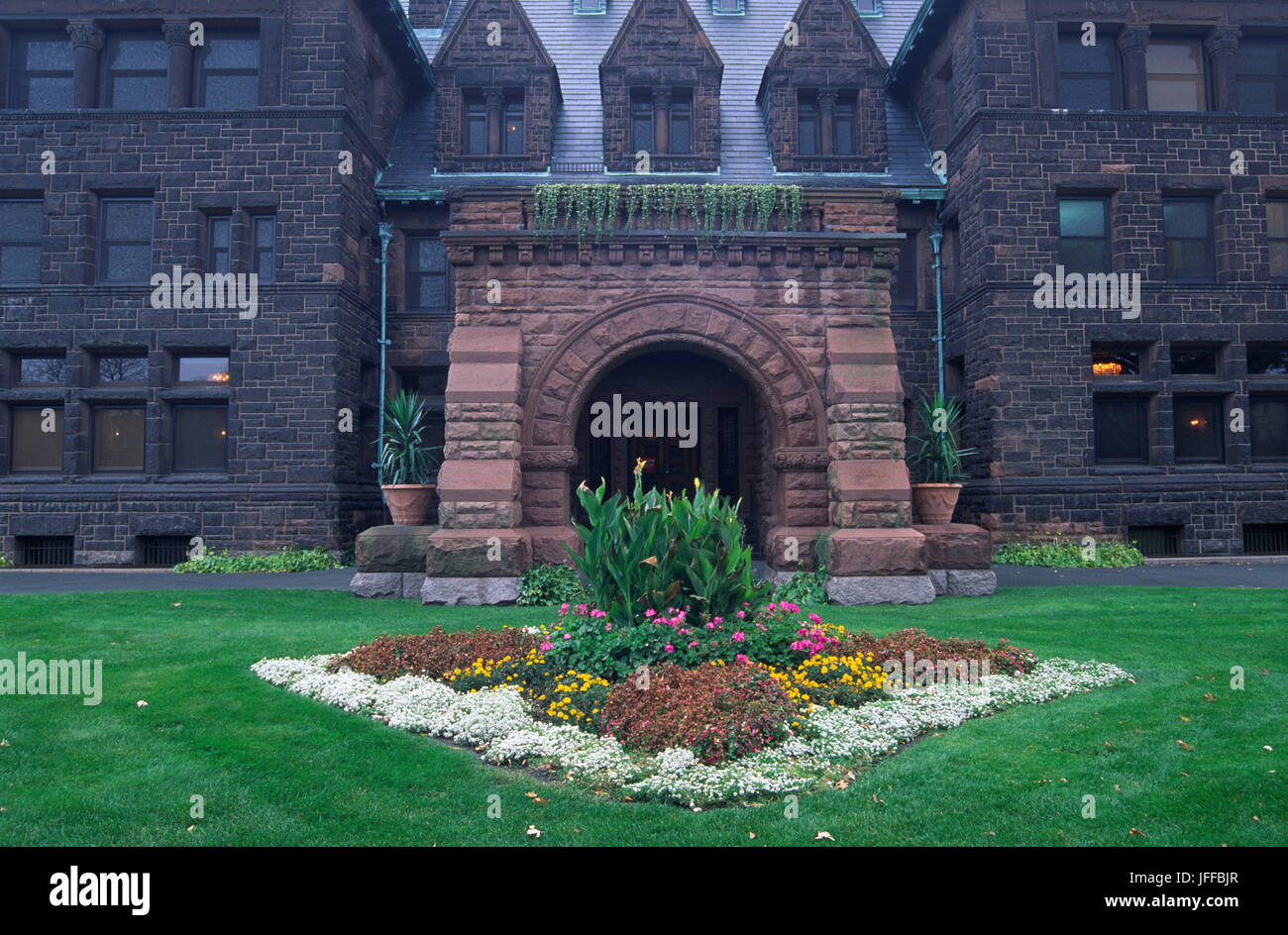Table Of Content

Buzzers under the dining room tables allowed Mary Hill to discreetly summon waitresses during a meal. Thirteen bathrooms featured state-of-the-art plumbing, with hot and cold running water. An elaborate ventilation system, which included twenty-two fireplaces, ensured that air moved freely throughout the house. The house’s total cost, including furnishings and other expenses, came to $931,275.01. By the late 1870s, James Hill’s growing fortunes and family required a larger home that reflected his elevated status within the community. Hill, his wife, Mary, and their children had moved through several homes over the years, mostly in the Lowertown neighborhood of St. Paul.
Summit Avenue Walking Tour
As new warehouses and railroad tracks crowded the Lowertown residential area, and as Hill's collection of paintings and sculpture overflowed the house, the Hill family thought it was desirable to move. Hill also realized that recent improvements in home technology, such as electric lighting, plumbing, ventilation, and fireproofing, could be incorporated into a new home. Moreover, since Hill was becoming a socially prominent person in the community, a new home would stand as a tribute to his status as the "Empire Builder". Living in Minneapolis offers a high quality of life with a close-knit community feel. The city boasts a lively arts scene with many theaters, museums, and galleries.
The MN Home From 'Jingle All The Way' Looks Very Different Now - 98.1 - Minnesota's New Country
The MN Home From 'Jingle All The Way' Looks Very Different Now.
Posted: Thu, 08 Feb 2024 08:00:00 GMT [source]
About City House
James J. Hill Lake Minnetonka History - Lake Minnetonka Magazine
James J. Hill Lake Minnetonka History.
Posted: Fri, 14 Jul 2023 01:58:24 GMT [source]
The mansion was home to the Saint Paul Diocesan Teachers College from 1927 to 1951. It housed various educational programs run by the nearby College of St. Catherine and administrative offices for the Archdiocese. The second floor was where James, Mary, and their daughters had their bedrooms.

Saint Paul Insider's Guide
The second floor contained Mr. and Mrs. Hill's rooms, two guest rooms, and rooms for their five daughters, Gertrude, Rachel, Clara, Ruth, and Charlotte. The third floor contained rooms for their sons James, Walter, and Louis (who later succeeded his father as president of the Great Northern Railway). It also had a room that served as a gymnasium and school room for the children, as well as quarters for the servants. In summary, the Minneapolis, MN metro area is a place with a rich history and a strong sense of community.
The Hills planned a house with the latest in modern conveniences where they could receive and entertain nationally known civic and religious leaders. Experience Christmas in 1910—both upstairs and downstairs—in the sumptuous Gilded Age mansion of railroad titan James J. Hill. Construction on City House began in 1927, and today it stands as an important reminder of Saint Paul's history as a Mississippi River port city.
Life after the family
The church used it for the next fifty-three years as space for offices, residences, and a teacher's college for women. The church preserved it well and did not make any significant alterations, although most of the original furniture was sold during this period. In 1961, the United States Department of the Interior designated the house a National Historic Landmark. The Minnesota Historical Society acquired the house in 1978, after the Archdiocese consolidated its offices elsewhere.
Visit the National Park Service Saint Paul Municipal Elevator and Sackhouse website for more information on the historical significance of City House. Get a behind-the-scenes look at areas of the James J. Hill House that are not featured on the standard house tour including the attic theater space, gate house and storage areas generally off-limits to visitors. SAH Archipedia tells the story of the United States through its buildings, landscapes, and cities. This freely available resource empowers the public with authoritative knowledge that deepens their understanding and appreciation of the built environment.

It even had a pipe organ, installed after someone suggested to Hill that other wealthy people had pipe organs in their homes. The house had a hybrid system of gas and electric lighting, with rotary switches on the walls to turn on the electric lights. However, there were no electrical outlets installed, because during that era electricity was only used for lighting. The woodwork in the house is very intricate, with hand-carved woodworking in the central hallway, the formal dining room, and the music room. Other rooms in the house, particularly on the second floor where most of the family members lived, do not have hand carved woodwork, but the woodwork is still richly colored and nicely detailed. To go with the hand carved woodwork in the formal dining room, there was also gold leaf plate on the ceiling.
From stunning Victorian architecture to notorious gangsters, Saint Paul's history is worth exploring. The fourth floor features a stage in a room that could seat 200 people, a grand piano, and gymnastic equipment. The Archdiocese transfers the house to the Minnesota Historical Society for $250,000 for the purposes of historic preservation and cultural programming. Family members purchase the mansion from the Hill estate and gift it to the Archdiocese of Saint Paul and Minneapolis. For over fifty-three years, its spaces are used as offices, classrooms, and housing. She moves with her husband, Erasmus Lindley, across the street to the Horace P. Rugg house at 251 Summit.
Explore the best places to buy a house based on home values, property taxes, home ownership rates, housing costs, and real estate trends. Once slated for demolition, the iconic City House is now listed on the National Register of Historic Places. The City House facility, formerly know as the Saint Paul Municipal Elevator and Sackhouse, has been restored as a park pavilion and interpretative center situated on piers and cantilevered out over the Mississippi River. Located in downtown Saint Paul at Mill St. and Walnut St. along the Sam Morgan Regional Trail, the facility offers beautiful views of the Mississippi River and the downtown skyline.
When the house was completed in 1891, it was equipped with the most advanced technologies of the day. Built during the transition between gas and electric lighting, the house was designed to include both. For security, windows and doors were wired to an annunciator system that would ring an alarm in the houseman’s room if they were opened unexpectedly.

No comments:
Post a Comment